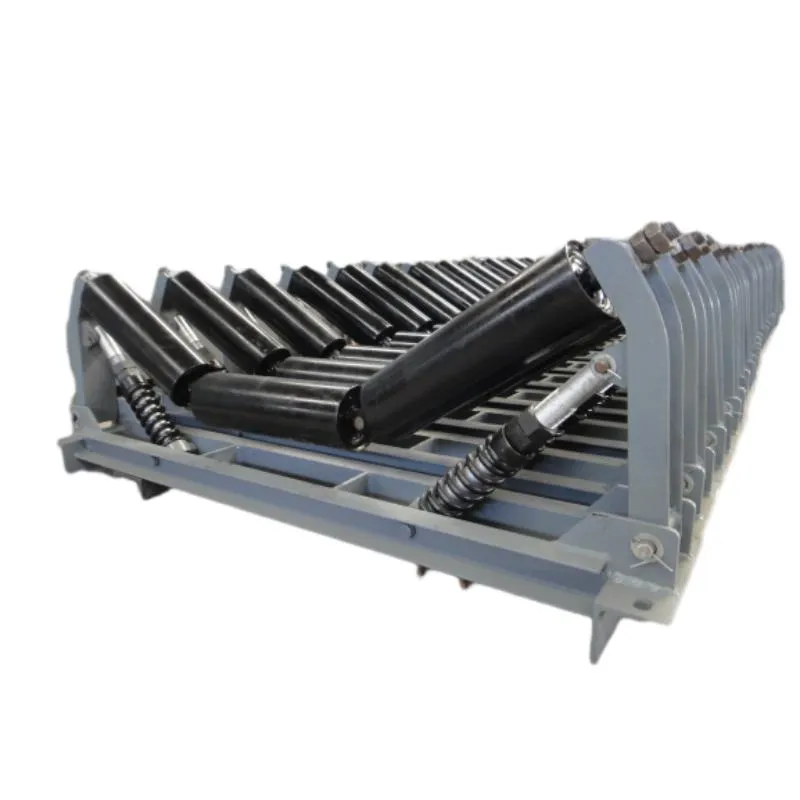How Gravity Powers a Pulley System for Efficient Lifting Solutions
Gravity Take-Up Pulley An Essential Component in Conveyor Systems
In the realm of material handling, the efficiency and reliability of conveyor systems play a pivotal role in various industries, ranging from mining to manufacturing. Among the key components that ensure the optimal performance of these systems is the gravity take-up pulley. This article delves into the importance, functionality, and benefits of gravity take-up pulleys in conveyor systems.
What is a Gravity Take-Up Pulley?
A gravity take-up pulley is a type of pulley system used in conveyor belts to maintain proper tension. It typically consists of a pulley mounted on a frame that allows it to move vertically. The primary function of the gravity take-up pulley is to counteract the elongation of the conveyor belt caused by wear and tear, thermal expansion, or the load that the belt is carrying. By providing the right amount of tension, it ensures smooth operation and prevents operational issues such as belt slippage or misalignment.
How Does a Gravity Take-Up Pulley Work?
The operation of a gravity take-up pulley is quite simple yet effective. As the conveyor belt runs, it may stretch due to various factors. The take-up pulley assembly, usually filled with weights or springs, descends due to the force of gravity. This downward movement adjusts the tension on the belt, compensating for the elongation. When the belt returns to its standard length, the pulley rises back to its original position. This automatic adjustment mechanism allows for constant tension without the need for manual intervention, promoting efficiency and reducing the risk of mechanical failure.
Benefits of Implementing a Gravity Take-Up Pulley
1. Increased Equipment Lifespan By maintaining proper tension, gravity take-up pulleys help reduce wear on the conveyor belt and associated components, leading to a longer operational life and decreased replacement costs.
gravity take up pulley

2. Enhanced Safety An incorrectly tensioned belt can lead to accidents, such as slippage or even belt breakage. Gravity take-up pulleys ensure that belt tension remains consistent, reducing the risk of operational hazards.
3. Reduced Maintenance The automatic tension maintenance allowed by gravity take-up pulleys minimizes the need for frequent manual adjustments, thus lowering overall maintenance requirements and enabling maintenance teams to focus on more critical tasks.
4. Improved Efficiency With proper tension, the conveyor system operates more smoothly and efficiently. This leads to increased productivity as materials are transported quickly and reliably to their destinations.
5. Cost-Effectiveness Though the initial investment in a gravity take-up pulley may seem significant, the long-term savings on maintenance, repairs, and replacements make it a cost-effective option for businesses.
Applications Across Industries
Gravity take-up pulleys are used in various applications, making them a versatile choice for industries such as mining, bulk material handling, food processing, and recycling. In mining, for instance, the arduous conditions and heavy loads necessitate stable and reliable conveyor systems to transport ores and minerals efficiently. Similarly, in food processing, maintaining the integrity of the conveyor belt is crucial to ensure the safe and reliable transport of goods.
Conclusion
In conclusion, gravity take-up pulleys are an integral part of modern conveyor systems. Their ability to maintain proper tension, enhance safety, and reduce maintenance makes them invaluable in countless applications across various industries. As businesses continue to seek efficiency and reliability in their operations, the significance of gravity take-up pulleys will undoubtedly grow, paving the way for continued innovation and improvement in material handling technologies. Investing in high-quality take-up pulley systems can lead to enhanced operational performance and contribute to the overall success of a business. The gravity take-up pulley stands as a testament to the blend of simplicity and effectiveness in engineering, ensuring that conveyor systems can meet the demanding challenges of the contemporary industrial landscape.
-
Impact Roller for Belt Conveyor – Durable Solutions for IndustryNewsNov.24,2025
-
Rubber Conveyor Rollers – Quiet, Durable, Sealed BearingsNewsNov.24,2025
-
Industrial Conveyor Belt Rollers: Durable Solutions for Harsh EnvironmentsNewsNov.24,2025
-
Idler Rollers for Belt Conveyors | Durable, Low-Noise OEMNewsNov.24,2025
-
Durable Rubber Conveyor Belt Rollers for Industrial UseNewsNov.24,2025
-
Ceramic Lagging Conveyor Pulley – Anti-Slip, Wear-ResistantNewsNov.17,2025






























